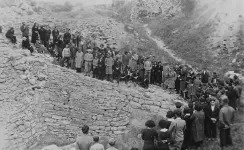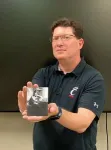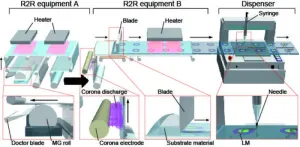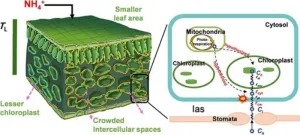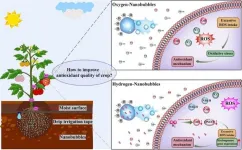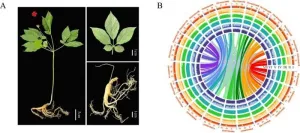(Press-News.org) While poring over nearly century-old photos documenting the University of Cincinnati’s historic excavation at Troy, archivist Jeff Kramer was struck by just how many people worked behind the scenes for years to contribute to its success.
The archivist and research associate in UC’s Department of Classics created a digital archive of pictures and documents from UC archaeologist Carl Blegen’s influential 1930s project that identified nine periods of reconstruction and evidence of a great battle and fiery devastation that some historians said was suggestive of the ransacking of Troy.
But in the four double volumes published on the project, the workers who made the team’s discoveries possible are mentioned briefly and only once, Kramer said. While this omission was hardly unusual in the early days of archaeology, Kramer said it ignores their important contributions to our understanding of ancient civilizations.
“All the big excavations owe their results to these individuals who are unheralded and unacknowledged,” he said. “They’re not given their due. They’re simply not mentioned.”
One worker in particular stood out in the extensive documentation from the seven-year project: an Albanian laborer named Emin Kani Barin who went by Kani. Kramer wrote about him and the broader question of acknowledging the invisible workers of archaeology in a paper published in the journal Bulletin of the History of Archaeology.
“These are the people who put shovels in the ground and swung the picks. They were the ones who pulled the artifacts out of the ground,” he said.
Troy was the backdrop for one of Greek mythology’s most dramatic stories: the Trojan War between the Greeks and Trojans and the ransacking of Troy mentioned in Virgil’s Aeneid.
Stories of Troy in Homer’s Iliad and Odyssey tell of the mythic figures Odysseus, Hector, Ajax and Achilles, cut down by an arrow to his heel. And its legends persist today, particularly that of the Trojan horse sculpture within which the Greeks allegedly hid to gain entry to the fortified city.
The ancient cities of Troy were first unearthed in the 1870s and studied again in expeditions over the next 20 years before UC’s Blegen arrived on the site in the early 1930s.
“This was an unbelievably vast undertaking,” Kramer said.
Despite the Great Depression, amateur archaeologist and heiress Louis Taft Semple funded the expedition. She was wife to William T. Semple, the head of UC’s Department of Classics, and niece to President William Howard Taft, who served as dean of UC’s College of Law.
Semple and his wife took part in the excavations throughout the project. When they were away, Blegen kept Semple apprised of developments via telegram, including this 1936 update: “Digging begun, still believe in Helen.”
Kramer said this was a cheeky reference to Helen of Troy, “the most beautiful woman in the world,” according to legend, whose abduction by Paris launched the Trojan War.
In 1914 another war had erupted across Europe. Kani’s family had sent him to Canada, where he learned English. He later moved to Akron, Ohio, where as a teenager he worked at a tire-rubber plant. He had a knack for languages and learned English, Polish and Russian from his factory co-workers.
After the war, he returned to Albania to find it fundamentally changed, Kramer said.
With the local economy in shambles, Kani and his new wife and child fled to Greece. But they found no refuge there. Instead, they were deported to Turkey as part of the 1923 compulsory population exchange in which Greece forcibly expelled more than 400,000 Muslims while Turkey deported an estimated 2 million Greek Orthodox Christians in what amounted to mutual ethnic cleansing.
“This compulsory population exchange resulted in a great deal of poverty in both countries,” Kramer said.
When Kani applied to work at Troy, Blegen wrote in his excavation log, he was “particularly ragged, unshaved, and seedy-looking.” But “employee No. 62,” as he was identified in the excavation records, quickly made himself indispensable to the project, Kramer said.
Kani helped Blegen translate instructions to the worker refugees. He was assigned with other skilled workers to mend pots broken over the millennia. He demonstrated such prowess that by his third year he was training others in the painstaking process of rebuilding the pots from tiny fragments.
In 1935 Kani was promoted to foreman where he took over bookkeeping duties and was entrusted with purchasing supplies. He also supervised the construction of the site guardhouse, a pottery room annex, a railway storeroom and a prefabricated house Blegen shipped from the United States.
And because of his knack for languages, he served as tour guide to visitors at the site when the UC representatives were not available.
Kramer said while just one photo of the workers was published in Blegen’s scholarly works documenting the excavation, Kani shows up in dozens of other photos the expedition captured of the archaeological site and daily life at Troy.
“If you look at the photos, you see he was everywhere. His energy was boundless,” Kramer said. “And in the daily journals, it’s clear when they needed something to be done they would call on Kani and his response was, ‘On it.’”
More than that, Kramer said, the photos and documents and Blegen’s later address to the Cincinnati Literary Club where he calls Kani the dig’s most important worker show a genuine fondness.
“It showed not just his interest in Kani’s story but also their friendship,” Kramer said.
Eric Cline, a professor at George Washington University, said the work of laborers was often overlooked in published scholarship because of class bias.
“It was a very colonialist attitude but common for the day,” he said.
Allison Mickel, an associate professor at Lehigh University, examined the unrecognized work of archaeology laborers in her 2021 book “Why Those who Shovel are Silent.”
“Archaeological excavations are, in many ways, microcosms of broader power structures in science and society,” she said.
Mickel said archaeology projects today are far more inclusive and typically include members of the community as valued partners in all stages of the project’s planning and execution.
“Luckily, I think a lot of archaeologists are really interested in building a more inclusive archaeology because that is the bedrock of better science,” she said.
After the excavation concluded in 1938, Kani continued to correspond with Blegen, noting that he had taken a job with the British American Tobacco Co.
Kramer said the tale of Kani’s life spanning continents, war, love, loss and tragedy was emblematic of this volatile time in world history.
“He was caught up in this stream that was so highly representative of what was being faced by millions of people,” Kramer said. “So I saw how remarkable his life was but also how his life reflected what was going on in Greece and Turkey at that time.”
END
Archivist explores Troy's invisible workers
Laborers at early archaeological sites often received no recognition for their contributions, expert says
2024-07-18
ELSE PRESS RELEASES FROM THIS DATE:
Stretchable electronics might make their way onto the market thanks to roll-to-roll process
2024-07-18
Electronics have evolved over the years to supersede simply enhancing day-to-day life to becoming almost seamlessly integrated with daily life. People have become accustomed to wearable electronics, but what about stretchable ones? There is a growing demand for this type of technology, but the current methods are not easily scalable for mass production to make these devices available to the public. However, mass development may be possible using the roll-to-roll (R2R) process, which prints various layers on a flexible rolled substrate, cutting out the manual nature of the process. By rolling this type of electronic out into the market, the possibility for stretchable electronics and even ...
From roots to leaves: The nitrogen connection to photosynthetic efficiency
2024-07-18
Delving into the nuances of plant nutrition, researchers have discovered that the form of nitrogen intake profoundly affects the efficiency of photosynthesis in plants. This pivotal finding sheds light on how plants process and utilize nitrogen, offering critical insights for enhancing crop productivity and optimizing nitrogen use in agriculture.
Photosynthesis efficiency in plants is influenced by the type of nitrogen absorbed. Ammonium (NH4+) and nitrate (NO3-) are the primary nitrogen sources, each affecting plant physiology differently. Variations in leaf anatomy, such as cell wall thickness and chloroplast number, play a crucial role in ...
Bubbling with benefits: Hydrogen nanobubbles boost tomato antioxidants
2024-07-18
A pioneering study has unlocked the potential of hydrogen nanobubbles to significantly augment the antioxidant content in tomatoes. This innovative irrigation technique not only fortifies the fruit with higher concentrations of health-boosting compounds but also opens new avenues for enhancing the nutritional value of agricultural produce. The research provides a blueprint for leveraging hydrogen's unique properties to combat oxidative stress and promote a healthier diet.
Tomatoes are a key source ...
Engineering: Tool predicts rogue waves up to 5 minutes in advance
2024-07-18
A new tool that can be used to predict the emergence of unusually large and unpredictable waves at sea — known as rogue waves — up to five minutes into the future is presented in a study published in Scientific Reports. The authors suggest that the tool could be used to issue advance warnings to ships and offshore platforms to enable those working on them to seek shelter, perform emergency shutdowns, or manoeuvre to minimise the impacts of approaching rogue waves.
The tool developed by Thomas Breunung and Balakumar Balachandran consists of a neural network that has been trained ...
Social distancing during the COVID-19 pandemic and neonatal mortality in the US
2024-07-18
About The Study: In this population-level study of National Center for Health Statistics databases, neonatal, early neonatal, and infant mortality rates did not increase during the initial COVID-19 pandemic period. However, associations were observed between the pandemic period social distancing measures and higher rates of neonatal and early neonatal mortality, as well as preterm birth rate with a lag period, suggesting the importance of monitoring infant health outcomes following pandemic-related population behavior changes.
Corresponding ...
Changes in registered nurse employment plans and workplace assessments
2024-07-18
About The Study: The results of this study showed that nurses reported improved workplace conditions in the 2023 vs the 2022 survey; however, planned departure rates, abusive or violent events, and unsafe conditions remained high, and understaffing remained a primary concern for most nurses. Health system leaders and policymakers should prioritize initiatives that support nurse retention and reduce potential workforce instability.
Corresponding Author: To contact the corresponding author, Christopher ...
Healthy prenatal dietary pattern and offspring autism
2024-07-18
About The Study: In this cohort study of mother-child dyads, adherence to a healthy prenatal dietary pattern was associated with a lower odds of autism diagnosis and social communication difficulties but not restrictive and repetitive behaviors.
Corresponding Author: To contact the corresponding author, Ruth Dundas, M.Sc., email ruth.dundas@glasgow.ac.uk.
To access the embargoed study: Visit our For The Media website at this link https://media.jamanetwork.com/
(doi:10.1001/jamanetworkopen.2024.22815)
Editor’s Note: Please see the article for additional information, including other authors, author ...
Comparative effectiveness of three digital interventions for adults seeking psychiatric services
2024-07-18
About The Study: The findings of this study suggest that different digital interventions can be used as supplemental or adjunctive tools within health care systems and may support patients during waiting list–related delays in care.
Corresponding Author: To contact the corresponding author, Adam G. Horwitz, Ph.D., email ahor@umich.edu.
To access the embargoed study: Visit our For The Media website at this link https://media.jamanetwork.com/
(doi:10.1001/jamanetworkopen.2024.22115)
Editor’s Note: Please see the article for additional information, including other authors, author contributions and affiliations, conflict of interest and ...
Mental health apps may help those waiting for care, study finds
2024-07-18
The recent surge in people seeking mental health care across the country has led to long wait times for first appointments with therapists and psychiatrists.
Now, a new study offers hope that while they wait to get care, patients could still get some relief by using evidence-based smartphone apps and wearable devices to track sleep and activity.
The study shows that depression and anxiety symptoms, and suicidality, all decreased measurably when patients were assigned to mobile applications that incorporated mindfulness practices, cognitive-behavioral therapy skills, or prompts that encouraged ...
Ginseng's full genome sequenced: unraveling the roots of a medicinal marvel
2024-07-18
A landmark study has successfully decoded the complete ginseng genome, unveiling the genetic mechanisms that govern saponin biosynthesis. This detailed genetic map illuminates the evolutionary and metabolic pathways of Panax ginseng, a staple in traditional medicine. This pivotal discovery promises to drive forward breeding initiatives and augment the plant's medicinal qualities, unlocking new possibilities for therapeutic applications.
Ginseng's role in traditional medicine is underscored by its complex genetic structure due to its allotetraploid nature. The study delves into this complexity, revealing key evolutionary insights into ...
LAST 30 PRESS RELEASES:
Theory-breaking extremely fast-growing black hole
ŌURA and National University of Singapore open Joint Lab to advance research in personalized preventive health
Hope for smarter lung cancer care
Singapore scientists discover lung cancer's "bodyguard system" - and how to disarm it
Bacteria use wrapping flagella to tunnel through microscopic passages
New critique prompts correction of high-profile Yellowstone aspen study, highlighting challenges in measuring ecosystem response to wolf reintroduction
Stroke survivors miss critical treatment, face greater disability due to systemic transfer delays
Delayed stroke care linked to increased disability risk
Long term use of anti-acid drugs may not increase stomach cancer risk
Non-monetary 'honor-based' incentives linked to increased blood donations
Natural ovulation as effective as hormones before IVF embryo transfer
Major clinical trial provides definitive evidence of impacts of steroid treatment on severe brain infection
Low vitamin D levels shown to raise risk of hospitalization with potentially fatal respiratory tract infections by 33%
Diagnoses of major conditions failing to recover since the pandemic
Scientists solve 66 million-year-old mystery of how Earth’s greenhouse age ended
Red light therapy shows promise for protecting football players’ brains
Trees — not grass and other greenery — associated with lower heart disease risk in cities
Chemical Insights scientist receives Achievement Award from the Society of Toxicology
Breakthrough organic crystalline material repairs itself in extreme cold temperatures, unlocking new possibilities for space and deep-sea technologies
Scientists discover novel immune ‘traffic controller’ hijacked by virus
When tropical oceans were oxygen oases
Positive interactions dominate among marine microbes, six-year study reveals
Safeguarding the Winter Olympics-Paralympics against climate change
Most would recommend RSV immunizations for older and pregnant people
Donated blood has a shelf life. A new test tracks how it's aging
Stroke during pregnancy, postpartum associated with more illness, job status later
American Meteorological Society announces new executive director
People with “binge-watching addiction” are more likely to be lonely
Wild potato follows a path to domestication in the American Southwest
General climate advocacy ad campaign received more public engagement compared to more-tailored ad campaign promoting sustainable fashion
[Press-News.org] Archivist explores Troy's invisible workersLaborers at early archaeological sites often received no recognition for their contributions, expert says
